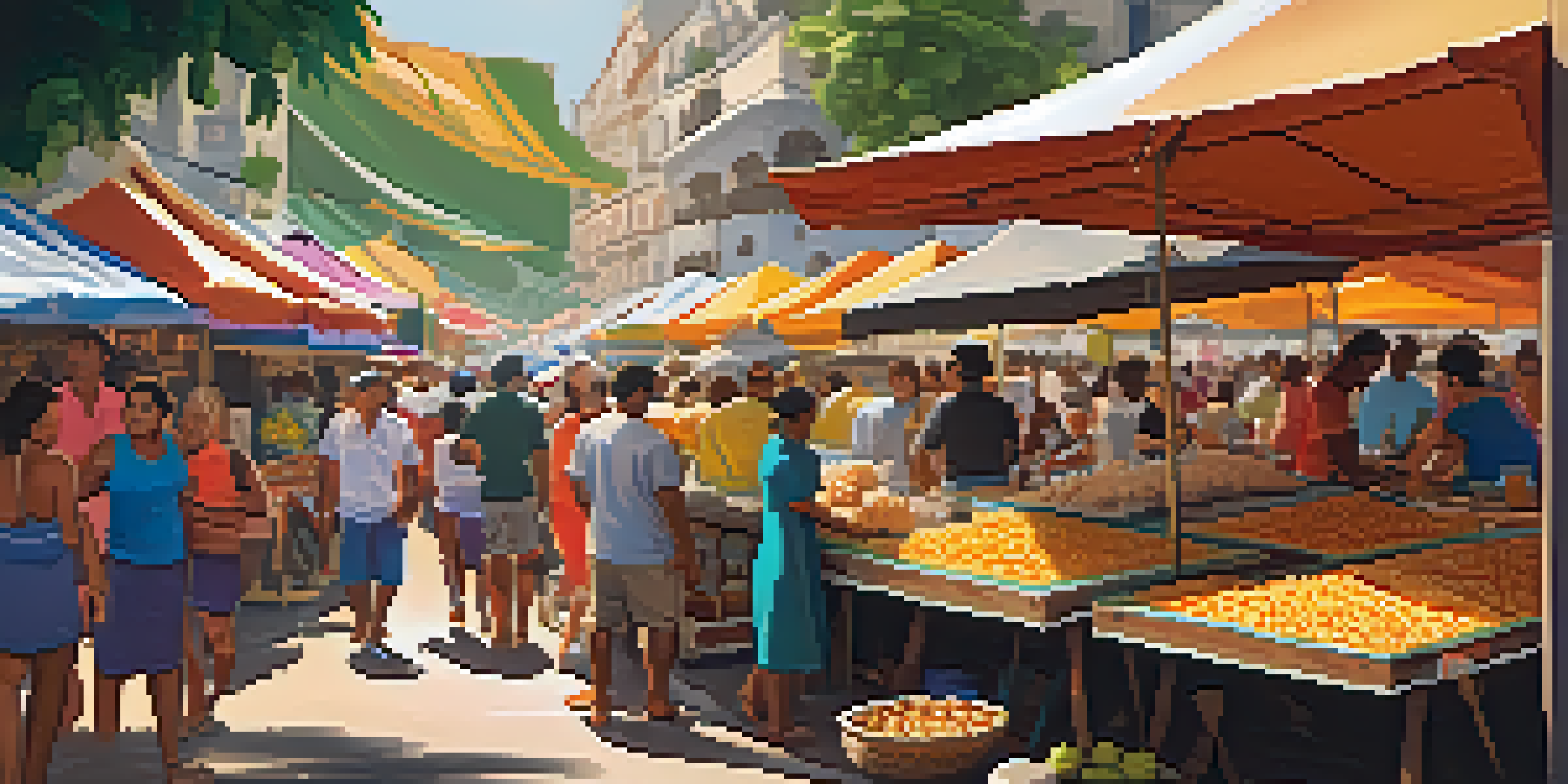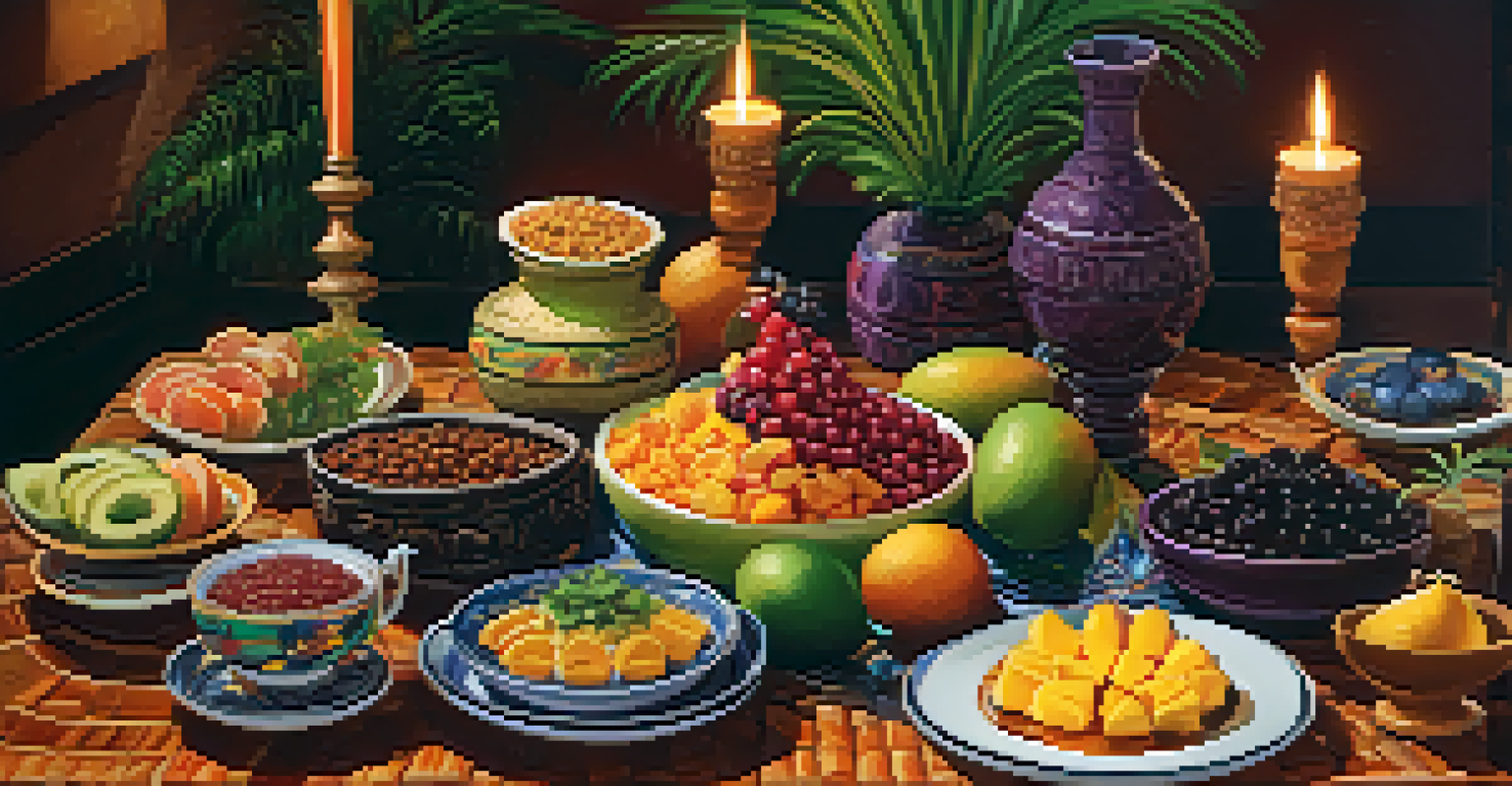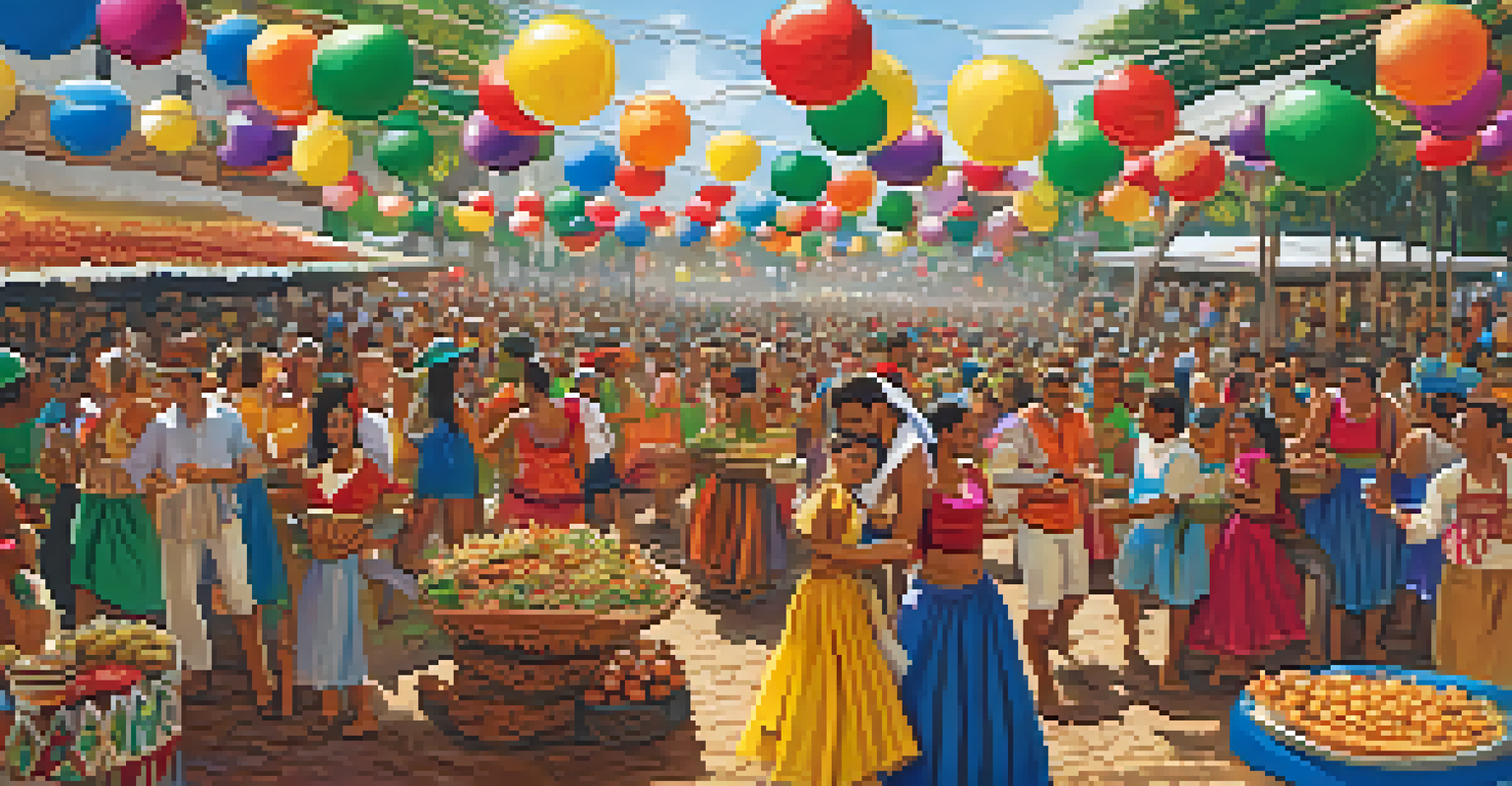Brazilian Cuisine: A Fusion of Cultures and Flavors Explained

The Cultural Melting Pot of Brazil's Culinary Scene
Brazilian cuisine is a vibrant fusion that reflects the country’s rich history and diverse cultures. With influences from Indigenous peoples, Portuguese colonizers, and African slaves, each dish tells a story of the land and its people. This cultural melting pot creates a unique dining experience that’s both flavorful and deeply rooted in tradition.
Food is our common ground, a universal experience.
For instance, the famous dish feijoada, a hearty black bean stew with various meats, showcases this blend perfectly. Originating from the Portuguese, it was adapted by African and Indigenous communities, evolving into what we enjoy today. Such dishes are not just meals; they are a celebration of Brazil's multifaceted heritage.
As you delve into Brazilian cuisine, you’ll find that every bite reveals layers of history and culture, inviting you to explore the connections between food and identity. This culinary journey is not just about taste; it's about understanding the stories behind the ingredients and the people who prepare them.
Staple Ingredients: The Heart of Brazilian Dishes
At the core of Brazilian cuisine are a few staple ingredients that bring life to its dishes. Rice, beans, and manioc (cassava) are fundamental, forming the backbone of many meals across the country. These ingredients not only provide sustenance but also symbolize the agricultural richness of Brazil's diverse regions.

For example, manioc is often turned into farinha, a flour used in various dishes, from farofa sprinkled over meats to tapioca pancakes. Additionally, the use of fresh fruits like açaí and mango showcases Brazil’s tropical climate, adding vibrant flavors and nutrition. These staples not only create a unique flavor profile but also connect meals to the land.
Brazilian Cuisine: A Cultural Fusion
Brazilian cuisine reflects a rich blend of Indigenous, Portuguese, and African influences, creating a unique dining experience rooted in tradition.
The interplay of these ingredients reflects the local customs and traditions, making each region's cuisine distinct yet interconnected. Understanding these staples is essential for appreciating the depth of Brazilian culinary arts and their significance in daily life.
Regional Diversity: Brazil's Culinary Landscape
Brazil is a vast country with a wide range of regional cuisines, each boasting its own specialties and cooking techniques. From the seafood-rich dishes of Bahia to the barbecued meats of the southern states, the diversity is astounding. Each region’s geography and climate greatly influence what ingredients are available and how they are prepared.
Cooking is like love. It should be entered into with abandon or not at all.
Take, for example, the Amazon region, where fish and exotic fruits dominate the menu. Dishes like tacacá, a soup made from the tucupi extract and jambu, reflect the unique ingredients found in the rainforest. Meanwhile, in the south, churrasco, or Brazilian barbecue, showcases a love for grilled meats, often enjoyed during social gatherings.
This regional diversity not only enriches the culinary landscape but also highlights the cultural significance of food as a unifier among people. Exploring these regional differences offers a deeper understanding of Brazil’s identity and the traditions that shape its cuisine.
Street Food: A Taste of Everyday Life in Brazil
Street food in Brazil is a delightful way to experience the country’s culinary culture. Vendors selling snacks and meals can be found in bustling city streets and local markets, offering a taste of authentic Brazilian life. From savory pastéis (fried pastries) to sweet brigadeiros (chocolate truffles), the options are endless.
One popular street food is the coxinha, a chicken-filled dough ball that’s deep-fried to golden perfection. This treat is not just a snack; it’s a beloved comfort food, often enjoyed during gatherings or as a quick bite on the go. Each street corner tells a story, showcasing the flavors that locals cherish.
Regional Diversity Shapes Flavors
The vast geography of Brazil results in diverse regional cuisines, each showcasing unique ingredients and cooking techniques that highlight local customs.
Sampling street food is more than just satisfying your hunger; it’s a way to connect with the community and its traditions. It offers a glimpse into the daily lives of Brazilians, making every bite a shared experience filled with warmth and culture.
Festivals and Food: Celebrating Brazilian Culinary Traditions
Festivals in Brazil are vibrant celebrations where food plays a central role, showcasing the country’s diverse culinary heritage. Events like Carnaval and Festa Junina bring communities together, with traditional dishes taking center stage. These occasions are not just about revelry; they are about preserving and honoring cultural practices through food.
During Carnaval, you’ll find an array of street foods, including acarajé, a deep-fried ball made from black-eyed peas and filled with shrimp. Meanwhile, Festa Junina features hearty dishes like canjica (sweet corn pudding) and paçoca (a sweet peanut treat), symbolizing the country’s rural roots. These festivals highlight how food connects people and traditions.
Participating in these culinary celebrations is a wonderful way to experience Brazilian culture firsthand. It invites everyone to partake in the joy of sharing meals, stories, and laughter, making food an integral part of community life.
Beverages: From Coffee to Caipirinhas in Brazilian Culture
Beverages are an essential aspect of Brazilian culinary culture, offering a wide range of flavors that complement the country’s diverse cuisine. Coffee, in particular, holds a special place in Brazilian hearts, being one of the largest producers of this beloved beverage. A strong cup of Brazilian coffee is often enjoyed throughout the day, serving as a comforting ritual.
In addition to coffee, the caipirinha, Brazil’s national cocktail, is a must-try. Made with cachaça (a sugarcane spirit), lime, and sugar, this refreshing drink perfectly embodies the spirit of Brazil. It’s not just a drink; it’s a symbol of celebration, often enjoyed during gatherings and festivities.
Food Festivals: Celebrating Heritage
Festivals in Brazil emphasize the importance of food in cultural celebrations, bringing communities together through traditional dishes that honor their heritage.
These beverages enhance the dining experience, providing a delightful balance to the rich flavors of Brazilian dishes. Exploring these drinks adds another layer to understanding the culture, as they are often tied to traditions and social interactions.
The Future of Brazilian Cuisine: Innovation Meets Tradition
As Brazil’s culinary scene evolves, chefs and home cooks are embracing innovation while honoring traditional recipes. This fusion of old and new is creating exciting culinary experiences that reflect contemporary tastes while respecting the past. The use of modern techniques and global influences is giving rise to a new wave of Brazilian cuisine.
For example, many chefs are experimenting with molecular gastronomy to reinterpret classic dishes, making them visually stunning and surprising. These innovative approaches attract both locals and tourists, eager to experience the evolution of Brazilian flavors in new forms. Social media plays a significant role in showcasing these creative dishes, making Brazilian cuisine more accessible worldwide.

However, the essence of Brazilian cooking remains rooted in its cultural heritage. This balance between tradition and innovation ensures that the future of Brazilian cuisine is bright, inviting everyone to explore its rich tapestry of flavors while celebrating its rich history.